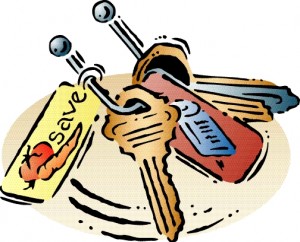 Just this week, I had a whirlwind experience with three customer loyalty programs that left me scratching my head
Just this week, I had a whirlwind experience with three customer loyalty programs that left me scratching my head
(and not necessarily feeling loyal):
Loyalty Experience#1: No value
The other day, I went out to dinner with a friend of mine. The restaurant we went to is part of a small group of local restaurants. When the check arrived, our waiter asked us if we had signed up for the reward program. Well, I had, but it was something like 10 years ago.
- Waiter: “Do you know what phone number it’s under? I can look it up that way.”
- Me: “Uhhh….no. I have like a bunch of phone numbers and I don’t remember which one it might be under.” (And I don’t care enough to have you run through all of them JUST to give me some points.)
- Waiter: “Well, do you want to sign up again?”
- Me: “Sure?” (Nooooo!)
I’m not sure what I thought would happen next. I didn’t really care about the points or rewards – I only go there a couple of times a year; and after all, I deliberately unsubscribed from their email list no less than two weeks ago. The waiter hands me an iPad: It’s dark in the restaurant, it seems there are a hundred questions, and I don’t have my reading glasses. But I signed up again, and now that I think about it, I don’t remember which phone number I put down. Shoot, now I’ll have to unsubscribe from that email again.
Lesson learned:
Actually, loyalty programs for small businesses can have a big payoff. Repeat customers and word-of-mouth marketing from your loyal customers can drive more traffic in the door and help you compete against larger competitors. But don’t be pushy and don’t ask your customers to give you too much information, especially if you’re not clear on how that information will be used.
Loyalty Experience#2: Multiple reward program confusion
The next day, I found myself at a department store. I have the store credit card and I use their coupons, so I am a loyal customer! As I was checking out, the cashier asked me:
- Cashier: “Do you want to sign up for our new rewards program?”
- Me: I flash my store credit card at her. “Aren’t I already in it?”
- Cashier: “No, it’s a new points program.”
She flipped the register’s touchscreen monitor my way and I signed up while I was standing in line. I might actually use this program, but I can’t figure out why I have to sign up for it.
Lesson learned:
The only reason I can think of to have two rewards programs is that they want to be able to track my non-store card purchases and tie all my store and online transactions back to me. Companies that can align consumer transactions across multiple channels are sitting on a treasure trove of data. For example, it allows the company to make better decisions on what merchandise to carry or where to make investments in retail locations.
Loyalty Experience#3: Lost opportunity
I left the department store and headed over to one of the large chain drugstores. I shop at this store maybe once a year and do not care about the reward program.
- Cashier: “Do you have your rewards card?”
- Me: “No, I don’t have one.”
- Cashier: “Well, I can use the store card to give you a discount, but don’t forget to bring your rewards card next time.”
- Me: (But I don’t have one!)
Lesson learned: Cashiers must be really tired of customers telling them that they left their card home. It’s estimated that each US household has more than 23 memberships and more than 50% of them go unused. This is a lost opportunity for the store to engage and encourage loyalty. The larget retailer Target offers a 5% discount at the point of sale if you use their branded cards, but avoids gimmicky points and discount programs.
The punchline: Customer loyalty and rewards programs can offer great value for consumers and provide an opportunity to capture data at the point of interaction. Make sure your rewards program (1) articulates customer value, (2) defines and rewards the most valuable (profitable) customers, and (3) leverages data gathered in rewards programs to optimize decisions for the company AND your customers. Check out this joint study by SAS and the International Institute for Analytics on customer loyalty: 27% of organizations surveyed believe that their loyalty programs aren't effective. Are you one of them?

2 Comments
Loyalty programs need to have apps that allow you to scan a bar code at the cash register. The only one I know of from all the schemes (approximately 30) I'm in is Myer, a large department store in Australia. I've always got my phone and I always get my points - plus it has good rewards - https://www.myerone.com.au/.
Why is this not more prevalent in loyalty schemes?
That's a great idea, Marnie! That way you don't have to carry that keychain full of loyalty fobs. But on the other hand, I think about the people standing in front of me at the drugstore...not people with smartphones, and definitely in need of the discount.
To your point about using smartphones for loyalty, some stores are starting to use beacon technology to promote offers in-store on your phone while you're shopping. So if you're in the grocery store and you pick up a certain item, then you might get an offer (or recipe ideas!) for complementary products.
http://www.businessinsider.com/beacons-are-the-most-important-new-retail-tech-2014-7